The Unknown Terror (1957); The Colossus of New York (1958); Destination Inner Space (1966)
BLU-RAY STREET DATE: MAY 28, 2024/KL STUDIO CLASSICS

It’s always a treat when a reliable physical media label presents a set of freshly restored, largely overlooked sci-fi chillers… right? KL Studio Classics, known partially for its three-film Blu-ray sets (mostly Film Noir; Westerns being a probable second), has now opted to bundle a trio of such movies, restored and ready for prime time. (Well, maybe a late late show). Its title? “Sci-Fi Chillers Collection”. Are the select three films, largely free of any real thematic connections, as uninspired as that moniker? Below, each of them- The Unknown Terror (1957), The Colossus of New York (1958), and Destination Inner Space (1966)- are individually reviewed, bonus features and all:
The Unknown Terror (1957)
DIRECTED BY CHARLES MARQUIS WARREN/1957
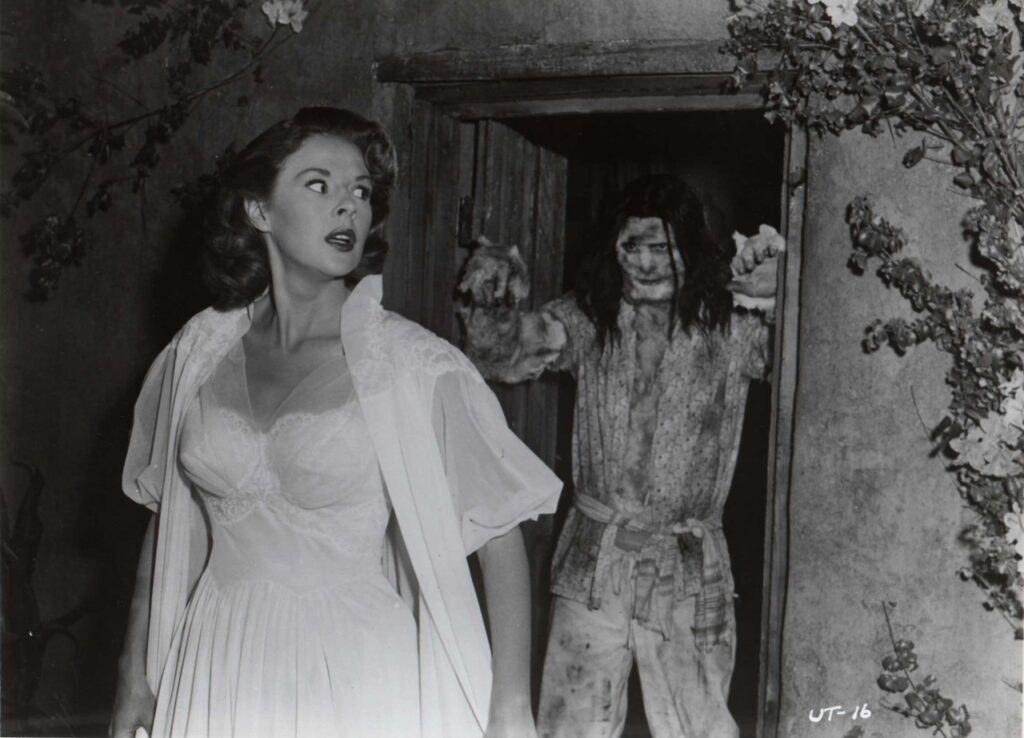
An explorer climbs on his belly through a dark and narrow cave, only to come upon… something. He stops, he screams… Cut to his point of view, revealing… The Unknown Terror!!! Quite literally, that is. The discordant 1950’s sci-fi music fires up as the opening titles, beginning with the words “The Unknown Terror”, follow. The film’s title doesn’t lie… the terror of this low-budget potboiler is indeed unknown for quite some time.
Much later, we learn the truth about what happened to the doomed cave explorer: some sort of horrendous toxic fungus so deadly that it could consume the Earth were it to escape the cave. (Note: in the part of the horrendous toxic fungus is… soap suds. Lots and lots of inexpensive, non-Union soap suds. Not since my late childhood has a bubble bath seemed so threatening).
The doomed cave explorer’s sister, her husband, and his former friend (Mala Powers, John Howard, and Paul Richard, respectively) all jet off to the unnamed Caribbean-esque village to look for the guy. Instead, they discover… madness. An unstable American doctor (Gerald Milton, weird) who’s been deified by the locals has been living there for fifteen years conducting his experiments on fungi, bacteria, and slime molds. He, it turns out, is keeper of the soap subs cave and its bizarre mutated human inhabitants. If only our protagonists would heed the musical warning of singer Sir Lancelot (“the king of the Calypsos”) at the film’s start. “Down, down, down in the bottomless cave/Down, down, down beyond the last grave…”
Shot in black and white with a screen-spanning 2.35:1 aspect ratio (“spine-chilling ‘Regalscope’”, named for the movie’s production company, Regal Films), The Unknown Terror is a largely stagnant piece. Filmmaker Charles Marquis Warren (a big TV director who’s Back from the Dead– also new on Blu-ray from KL Studio Classics– was often paired with this on double features) does his best to imbue this dull descent with tension and even a little sexiness. Aside from Sir Lancelot’s singing at the beginning, though, the film doesn’t hold together or hold my attention. Film historian Stephen Bissette provides an info-packed audio commentary, leaving no stone unturned. But no amount of insight can save this one from the depths.
The Colossus Of New York (1958)
DIRECTED BY EUGÈNE GOLDBECK/1958
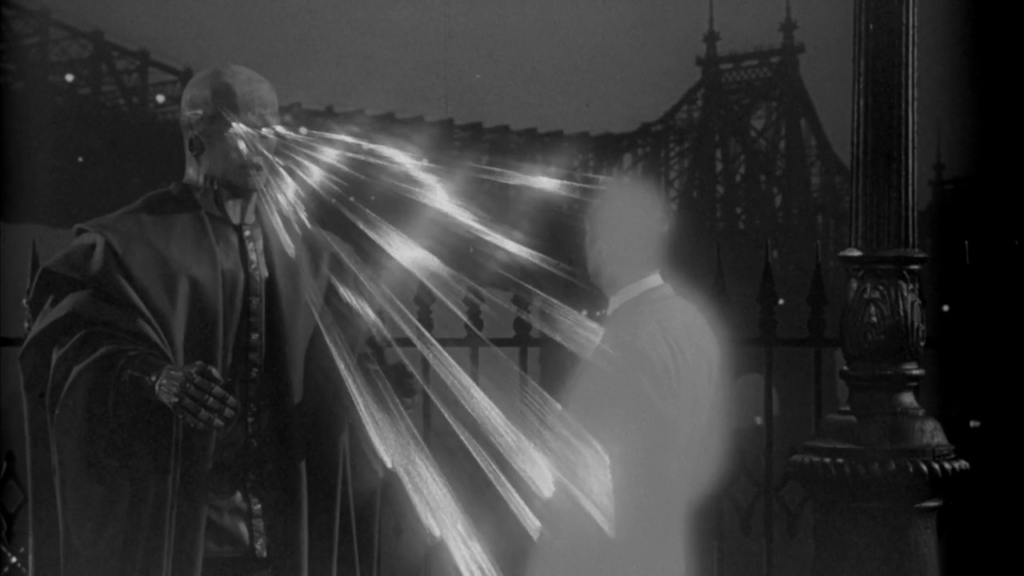
Dr. Jeremy ‘Jerry’ Spensser is a brilliant scientist. So brilliant that his gloating father (Otto Kruger), who’s also a scientist, believes that he could help cure world hunger. Except, after a very early scene in the movie, Jerry is as dead as he his brilliant. His death is a tragedy not only for humankind but for his wife (Mala Powers) and young son (Charles Herbert), who witnessed him being struck to death by an oncoming truck.
The senior Spensser, refusing to let Jerry’s brain rot in the grave, retrieves it, revives it, and encases it in a large, lumbering metallic body- as one would. Jerry, from that moment on, is the titular colossus (manned by actor Ed Wolff), a giant with the likeness of Doom Patrol’s Robotman, equipped with death ray eyes and a self-destruct lever. The use of one will necessitate the use of the other.
Being a low-budget b-movie, it’s rather obvious that the bulk of the production’s resources went into the colossus outfit as opposed to the laboratory set (beakers on sparse tables) or the musical score (a rudimentary piano effort for which the film suffers). As far as Frankenstein-esque sci-fi metal men go, the colossus does weild a great onscreen presence. Although the actors surrounding it are surprisingly good for this fare (particularly Kruger as Jerry’s obsessive father who prioritizes the overall good of mankind to the severe detriment of his late son’s family and others), The Colossus of New York wouldn’t be much without its central robot man being as ominous as it is. The question it hinges on- whether one’s body impacts one’s brain- is one of those perfectly fascinating premises for this sort of thing. Maybe next time, if there is a next time, old Dr. Spensser will revive the brain in a less terrifying, less enormous, less bull-in-a-china-shop housing. The fact that RoboJerry’s hands are literally too large to handle any of the lab equipment seems like a massive misstep for any number of reasons.
Film historians Tom Weaver, Larry Blamire and Ron Adams are here with a brand-new commentary. The track is primarily Weaver with “guest appearances” by his pals via the miracle of audio editing. Additionally, Weaver dips into his extensive history of years-ago interviews with the “sci-fi old timers”, including a key portion focusing on the film’s legendary producer William Alland. Alland not only acted in Orson Welles’ Mercury Players group, appearing in his radio adaptation of War of the Worlds and Citizen Kane, but later ushered many of the greatest sci-fi chillers of the 1950s to big screen.
The Colossus of New York is, as Weaver observes, a “brain in a jar” movie that becomes a Frankenstein story. Everyone is fully committed to the project, and it’s got some solid ethical conundrums and a cool cyborg at its core. The grand flaw is that said cyborg would never be realized in this manner by these people at this time, and the film insists that it would. To paraphrase a famed New York-centric quote, there are eight million stories in the naked city. This is a particularly weird one.
Destination Inner Space (1966)
DIRECTOR FRANCIS D. LYON/1966
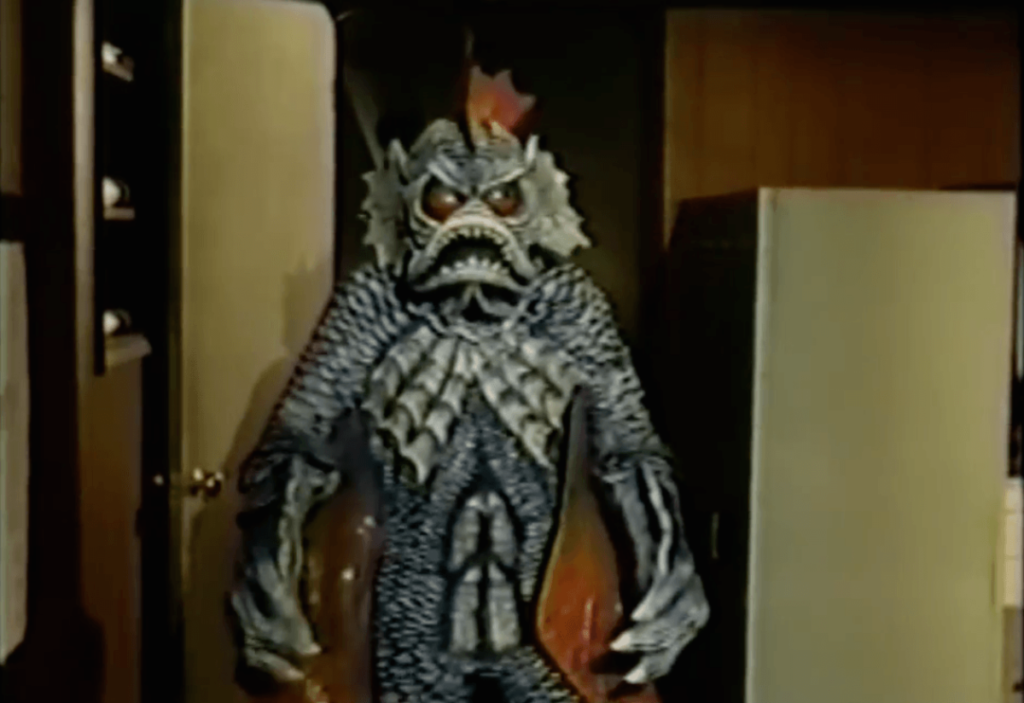
With all the cinematic flare of a subpar original Star Trek episode, 1966’s Destination Inner Space slowly submerges over the course of its padded eighty-two-minute run time. Stars Scott Brady (gruff, gruff, gruff) as a hawkish military commander and Hugh Maddox (voice of Race Bannon on the original Jonny Quest series, among many other animated characters elsewhere) spend decompressed minutes simply zipping around in a speedboat or a mini-sub. In between such excursions, they must grapple with a pissed off alien sea creature. While cumbersome, the submersible creature is the highlight of the film.
Most of this sci-fi monster chase takes place in an underwater sea-lab, its exterior a bright yellow cross-shaped model resembling something out of Gerry Anderson’s Thunderbirds. Similarly, the acting also resembles something out of Thunderbirds. Typically, I always say not to blame actors for a film’s shortcomings, and I will abide by that. But no one in Destination Inner Space is bringing their A-game, particularly not director Francis D. Lyon, who reportedly made this film within days of another flailing genre exercise, Castle of Evil (1966).
While the male characters bark and snap at one another over what to do about the newly discovered sea creature (Scientist: “We must study it!” Commander: “No! We must KILL IT!”), the two female characters (Sheree North and Wende Wagner) are relegated to standing around unsure of what to do with their hands. Both are dressed for a nice afternoon at the local ladies’ tearoom as opposed to whatever they’re aboard the lab to do. Rushed, stupid, and televisual to a great fault, Destination Inner Space is a waterlogged bore.
That said, it’s good to have it restored as an HD master from a 4K scan (as are its set-mates, The Colossus of New York and The Unknown Terror), granting a level of preservation to this greatly flawed sci-fi/horror depiction of violent reactionary intolerance and overarching sexism upheld as key virtues of survival. We mustn’t lose these allegorical depictions of whom we were and where we’ve been. It really helps when their garish color palates truly pop.
The commentary on Destination Inner Space is by film historian David Del Valle and archivist and writer Stan Shaffer, both of whom provide a levelheaded approach to this movie. Del Valle rightly points out that despite the cast list being stocked with ubiquitous TV actors, the real star is the guy in the rubber suit. As insightful as he is entertaining, Del Valle also comments on the bright undersea cinematography: “When you’re down on the ocean floor, why is it lit like it’s K-Mart?” Shaffer ultimately declares Destination Inner Space “underrated”, though Del Valle seems content to more or less call the spade a spade. It’s a terrific listen.
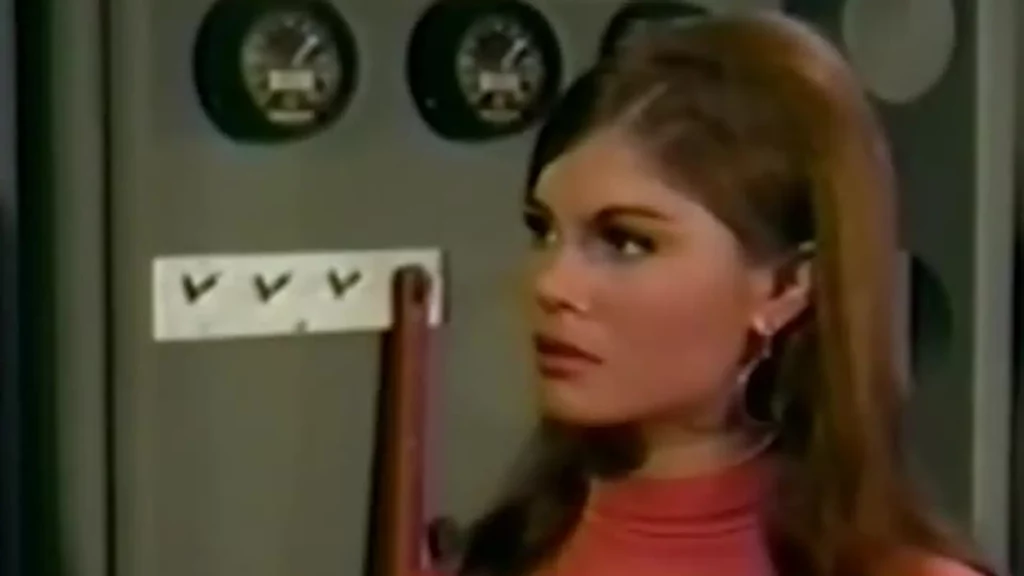
With this modest Sci-Fi Chillers set, Kino Lorber introduces film historian “sidebars”, which is literally a Zoom call discussion of the movies. Two of the three titles, Colossus of New York and Destination Inner Space, get this “sidebar” treatment. Both feature Stephen Bissette and Tim Lucas, who’s individual office spaces make for a fun clutter competition. Both these guys are legends in their own ways; both top tier when it comes to processing films of this ilk. It’s a treat to get to eavesdrop on their full film conversations. (Just over an hour for Colossus; nearly forty minutes for Destination).
During their sidebars, Bissette points out that Destination Inner Space is essentially a mashup of The Thing from Another World (1951) and It! Terror from Beyond Space (1958). Regarding Colossus, there’s much talk of producer William Alland, with details of how his partnership with director Jack Arnold resulted in some of the finest b-movie genre fare of the 1950s.
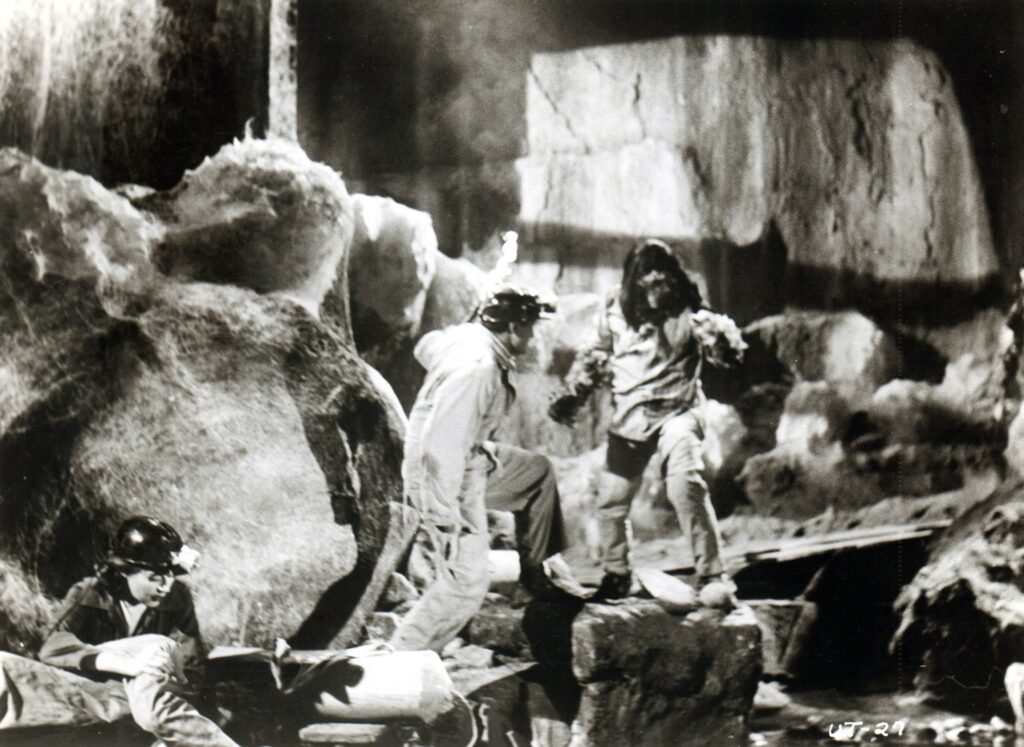
Unlike KL’s bulkier packaging on its three-movie “Film Noir: The Dark Side of Cinema” and its Audie Murphy sets, “Sci-Fi Chillers” slims down considerably. Rather than three individual cases in a cardboard box, we get two discs in one case (housed in a matching slipcover, presumably only for early buyers). While it may lack a certain statement-making girth, the realities of shelf space win out here. And y’know, it still looks plenty nice.
Also looking plenty nice are the films themselves. A clear and clean presentation elevates the perception of any film, particularly ones like these that reside in the collective memory (if not individual memory) as static-ridden “Saturday Night Shockers.” Some prefer seeing movies in their compromised condition that they remember first seeing them, but scarcely any film was made with the intent to be viewed any way but unblemished.
With The Colossus of New York as the far and away towering titan of this three-film set, the ruling must be that in terms of quality entertainment, KL’s Sci-Fi Chillers comes up short. That, however, should not deter devotees of such old-time semi-spectacle from picking up this offering. We geeks know who we are, and we generally know what to expect (or not expect) from such titles. Hopefully this review is all the more clarifying as where expectations should be placed when you inevitably do pick up this otherwise very well-produced package.

